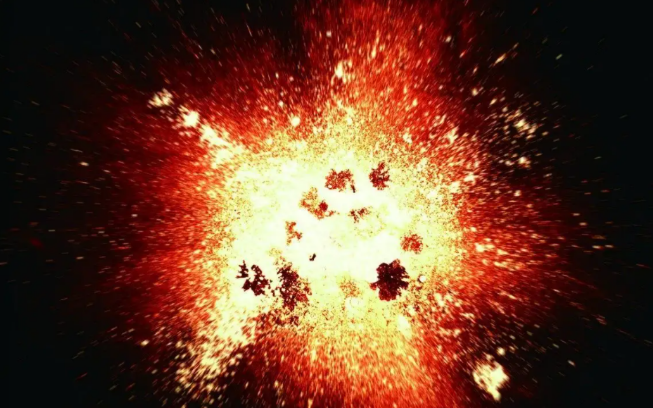The first few hundred million years after the Big Bang remain the only understudied period of the cosmic age. The James Webb Space Telescope, equipped with extremely sensitive infrared equipment, is the most suitable machine for this task. In just a few weeks since the first data was released, dozens of candidate galaxies have been reported. But the newly discovered Shadowed galaxy appears to be in two places at once, and scientists think the existence of these two anomalies may break the laws of physics! So what's the makeup of this distant galaxy? In what way does it threaten the models of cosmology that we already have?
We know that light travels fast, and everything we see in the universe represents what it was like in the past. So if a galaxy is 12 billion light years away, we're looking at the light it emitted 12 billion years ago, but because the universe is the larger the wavelength of light, the longer it takes to reach us. In other words, it turns red. Astronomers use the dimensionless number z to describe the redshift 39bet-kết quả bóng đá-kết quả xổ số miền bắc-kèo bóng đá -soi cầu bóng đá-đặt cược. Z equals zero, the current time, as its value goes up, the time of looking back and how far away the object is. One way to calculate a galaxy's redshift is by looking at its different standard color filters, and the only way to find the exact redshift of such a galaxy is to look at its spectral lines. Thus, spectral redshifts seem to be the best way to measure the distance between galaxies.
So far, astronomers have only found one galaxy with a z greater than 10. Hubble discovered it in 2015 and named it GN Z11. Although the Hubble cannot see more than a dozen galaxies redshift, but because the instrument can only measure a range of wavelengths, therefore the Hubble can see only the earliest 500 million years after the big bang, but webber can be traced back to the longer time, is about 200 million years after the big bang, it provides us with the perspective of a z is greater than the age of 13, this time we can't reach so far.
 With the Webb telescope, astronomers can find galaxies with a redshift between 13 and 14. Within the first few weeks, astronomers found a number of candidate galaxies in this range. In contrast, a team of scientists reported a record-breaking galaxy with a redshift of 17. The galaxy's name is Cer1749, and it only appeared 220 million years after the Big Bang, so we're looking at almost the beginning of time.
With the Webb telescope, astronomers can find galaxies with a redshift between 13 and 14. Within the first few weeks, astronomers found a number of candidate galaxies in this range. In contrast, a team of scientists reported a record-breaking galaxy with a redshift of 17. The galaxy's name is Cer1749, and it only appeared 220 million years after the Big Bang, so we're looking at almost the beginning of time.
The galaxy's size was the first thing that puzzled astronomers, with a mass five billion times that of the sun. Considering the age of the galaxy, that's a very large number. It has five times as many stars as GN Z11, a possible galaxy spotted by the James Webb Space Telescope at a redshift of 13.1. Cers1749 conflicts with the Lambda CDM theory, the researchers report. If this galaxy is confirmed by spectra, and is more likely to be found in a region of tension, it could place great limitations on cosmology.
The researchers also found that the galaxy is producing 34 solar-mass objects per year, which is almost 100 times more than the Milky Way, so the galaxy may have gone through a very busy star-making period. Beyond that, one oddity of CER1749 is its absolute ultraviolet magnitude, or MUV, which is a measure of its ultraviolet brightness. In astronomy, the absolute magnitude of an object shows how bright it is, and the brighter and brighter the object in the sky, the smaller this number is. Cer1749 has a MUV of -22. This proves that this one galaxy is very bright, but a system only 220 million years from the Big Bang should not have such high UV brightness, a parameter that suggests something is wrong with the way we model the universe.
That's because CER1749 isn't the only galaxy with such bright light in times Z greater than 10. Even HD1, the most distant candidate galaxy found by telescopes on Earth, has a -23 MUV. So if CERS1749 is confirmed as z equal to 17, it will be the second brightest galaxy. These findings suggest once again that the existence of these galaxies does not fit current cosmological models, and once they are confirmed, the Big Bang model may not exist!